The Church of the Flying Spaghetti Monster (FSM), a faith that might sound like a whimsical internet joke, has a surprisingly recent and deliberate origin story. While it may seem like it emerged from the depths of online absurdity, the FSM was born from a clever protest against the intrusion of religious dogma into science education.
The Genesis of the Noodly Appendage: A Protest in Kansas
To understand where the Flying Spaghetti Monster comes from, we need to travel back to 2005 in Kansas, USA. The Kansas State Board of Education was at the center of a heated debate concerning the teaching of evolution in public schools. Intelligent Design, a pseudo-scientific concept arguing for supernatural intervention in the complexity of life, was being pushed as an alternative to evolution, and some board members advocated for its inclusion in the science curriculum.
Bobby Henderson, a physics graduate from Oregon State University, saw this as a dangerous blurring of lines between science and religion. In a witty and now-famous open letter to the Kansas State Board of Education, Henderson introduced the Flying Spaghetti Monster as a creator deity.
 Bobby Henderson dreaming of pirate boats
Bobby Henderson dreaming of pirate boats
This wasn’t a genuine attempt to start a new religion in the traditional sense. Instead, Henderson’s letter was a brilliant satirical argument against Intelligent Design. He reasoned that if Intelligent Design should be given equal time in science classrooms, then so should the theory that the Flying Spaghetti Monster created the universe.
His point was sharp and clear: Intelligent Design, like the FSM creation story, lacked scientific evidence and was rooted in faith-based beliefs. By presenting Pastafarianism, Henderson highlighted the absurdity of forcing non-scientific religious ideas into a science curriculum. The very notion of a Flying Spaghetti Monster was designed to be ridiculous, mirroring the lack of empirical basis for Intelligent Design.
From Open Letter to Internet Sensation
The open letter, published on Henderson’s website, went viral. The sheer creativity and humor of the Flying Spaghetti Monster concept resonated with people online. It became a rallying point for those who opposed the encroachment of creationism and Intelligent Design into science education.
What started as a single satirical letter quickly evolved into a cultural phenomenon. People embraced Pastafarianism, not necessarily as a literal religion, but as a symbol of reason, skepticism, and the separation of church and state. The Church of the Flying Spaghetti Monster was effectively born from this online buzz, gaining followers who identified with its message of challenging dogma and celebrating rational thought with a healthy dose of humor.
Core Tenets: Pirates, Beer Volcanoes, and Questioning Everything
While the origin of the Flying Spaghetti Monster is rooted in satire, Pastafarianism has developed its own set of beliefs and traditions, often presented with tongue-in-cheek humor. These elements contribute to the unique identity of the “religion” and further emphasize its satirical nature.
One of the most notable aspects is the Pastafarian creation myth, which posits that the Flying Spaghetti Monster created the universe after a bout of heavy drinking. This directly contrasts with creationist narratives and highlights the arbitrary nature of creation stories in general.
Pirates are revered figures in Pastafarianism, believed to be the original Pastafarians and peaceful explorers. This is a humorous twist on the negative stereotype of pirates, attributing their negative image to Christian misinformation. The connection between pirates and Pastafarianism is often used to satirize the selective interpretation and manipulation of historical and scientific facts by some religious groups.
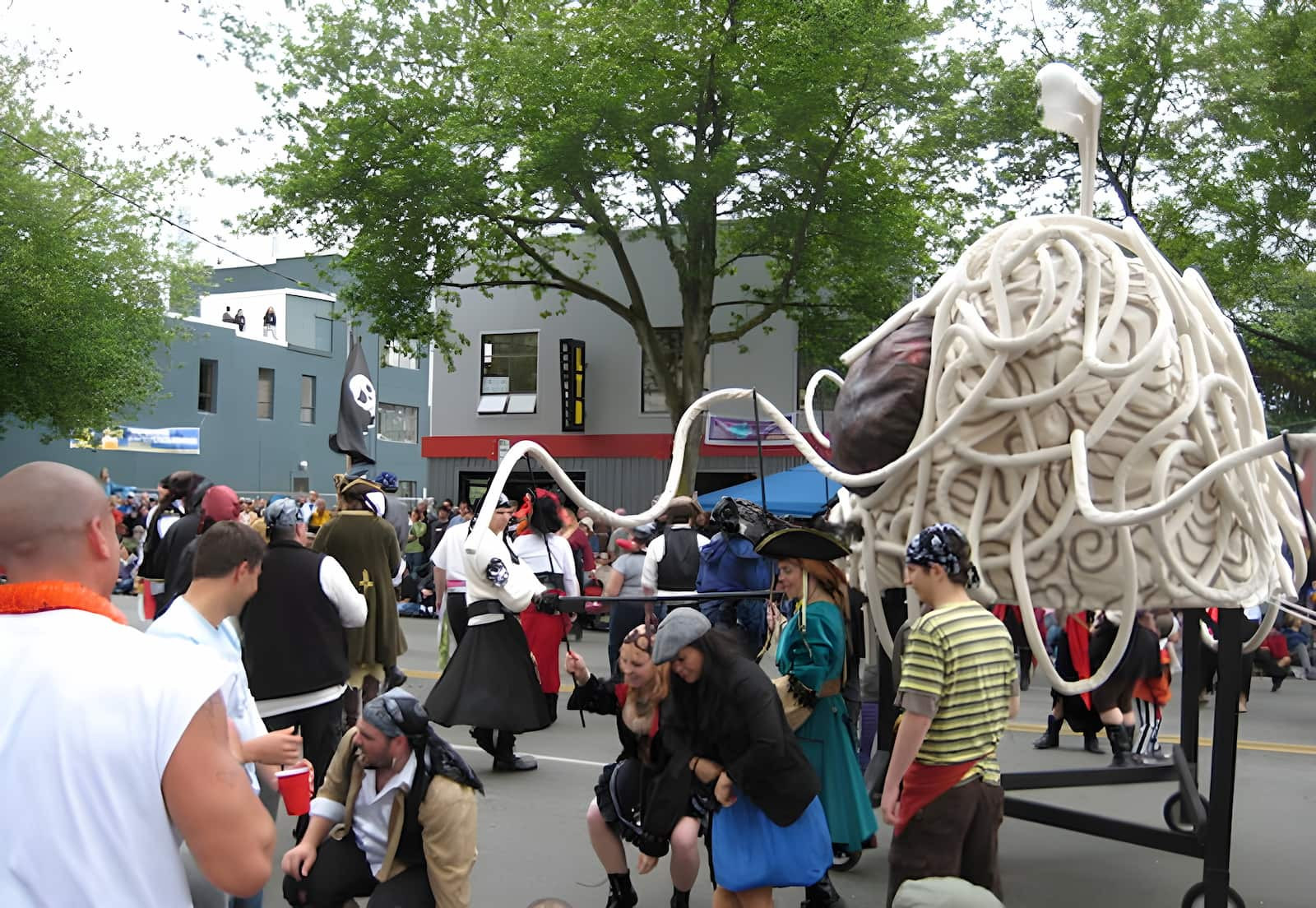 FSM looks great in parades
FSM looks great in parades
Pastafarian heaven is famously described as having beer volcanoes and stripper factories, a deliberately hedonistic and comical vision of the afterlife. This contrasts sharply with more traditional, often austere, conceptions of heaven and further underscores the satirical and lighthearted nature of Pastafarianism.
Is Pastafarianism a Real Religion? Community and Satire
The question of whether Pastafarianism is a “real” religion is often debated, and intentionally so. For many Pastafarians, the point isn’t literal belief in a giant, noodle-y deity. Instead, it’s about the community, the shared values of skepticism and reason, and the use of satire to critique flawed logic and dogma.
As the original article states, “You do not have to Believe to be part of our Church.” This inclusivity is a core tenet. Pastafarianism welcomes skeptics, atheists, and even members of other religions. It emphasizes that religion can provide community and spiritual experiences even without literal belief, highlighting the social and communal aspects of faith.
The satirical nature of Pastafarianism is not seen as a weakness but as a strength. Satire, to be effective, relies on truth. The humor in Pastafarianism serves to expose what adherents see as the “crazy nonsense done in the name of religion” and to promote a more rational and evidence-based worldview.
Joining the Church of the Flying Spaghetti Monster: Embrace the Noodle
Joining the Church of the Flying Spaghetti Monster is intentionally informal. There are no formal membership processes or dues. As the website declares, “Please consider yourself a member.” This open and accessible nature further emphasizes the community aspect and the idea that Pastafarianism is more about shared values than rigid doctrine.
For those who wish to take a more “official” step, the Church offers Certificates of Ordination online, primarily as a way to support the website and the Pastafarian movement. Becoming a minister is presented with a touch of humor, highlighting the “immense responsibility of the priesthood.”
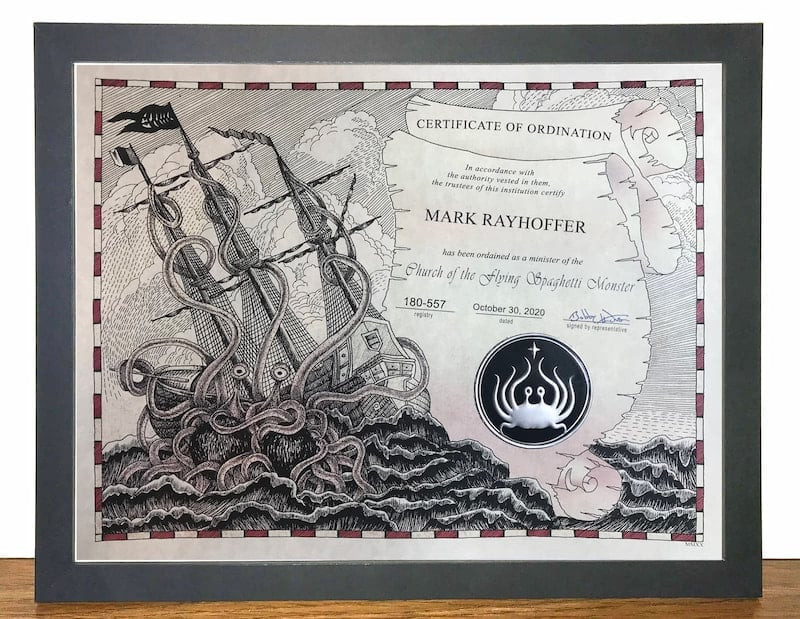 Certificates of Ordination
Certificates of Ordination
Spreading the Word: Evangelism, Pastafarian Style
Evangelism, or spreading the word, is also a part of Pastafarianism, albeit with a distinctly satirical twist. Pastafarians engage in public displays and acts of “evangelism” that are often humorous and designed to provoke thought.
Examples include FSM-themed floats in parades, decorating holiday trees with noodle-y tree-toppers, and even wearing colanders as religious headwear in official photos. These acts are not about aggressive proselytizing but about playfully challenging norms and raising awareness about Pastafarianism’s message of reason and skepticism.
 Tree-topper
Tree-topper
 Ride around in style
Ride around in style
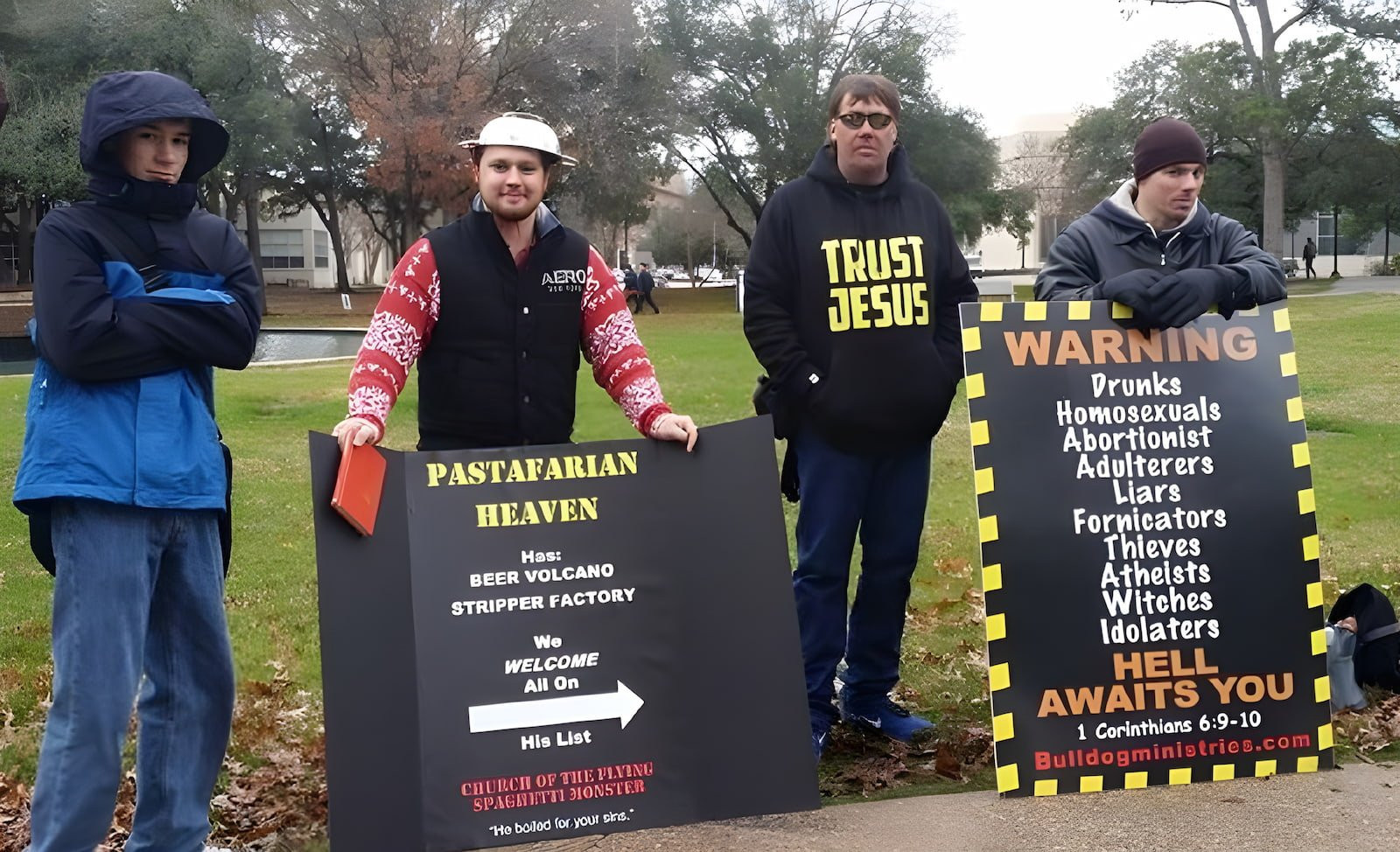 On-campus ministers
On-campus ministers
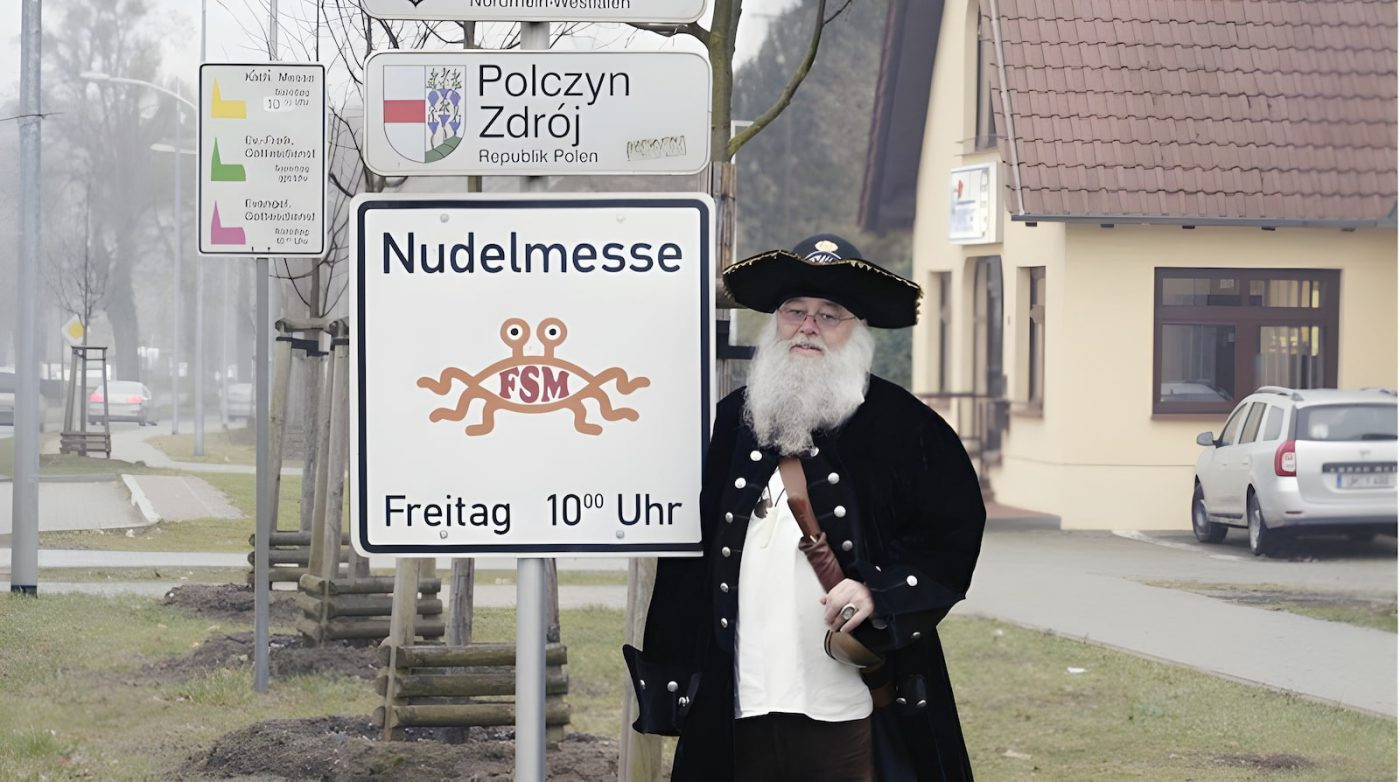 Community Outreach
Community Outreach
 Show your faith at the workplace
Show your faith at the workplace
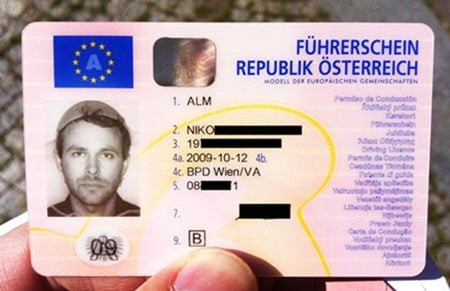 Colander on license photos
Colander on license photos
 Pumpkin evangelism
Pumpkin evangelism
Questions and Answers: Addressing Common Queries about the FSM
The Church of the Flying Spaghetti Monster website includes a Q&A section that directly addresses common questions and misconceptions about Pastafarianism, further clarifying its origins and purpose.
Q: Is this a joke?
A: While elements are satirical, it’s not just a joke. Satire is a legitimate basis for religion, and many religions contain elements that rational followers interpret metaphorically rather than literally.
Q: Are Pastafarians anti-religion?
A: No, Pastafarianism is not anti-religion in general, but it is against “crazy nonsense done in the name of religion.” People of all faiths and no faith are welcome.
Q: Do Pastafarians really believe in the FSM?
A: Some do, some don’t. The point is that belief isn’t necessarily the defining factor. Community and shared values are equally important.
Q: What about abortion and right to life?
A: Pastafarianism humorously takes a pro-life stance to an absurd extreme, arguing for the protection of sperm as “potential humans,” highlighting the complexities and potential inconsistencies in such debates.
Q: What is the Pastafarian view on same-sex marriage?
A: The Church of FSM welcomes everyone, regardless of sexual orientation, into the “loving embrace of His Noodly Appendage.”
Q: How do Pastafarians believe the world was created?
A: The Flying Spaghetti Monster created the world to appear billions of years old and to look like evolution happened, testing our faith. This is a satirical take on creationist arguments against scientific evidence.
Q: Why is Christianity more widely accepted than Pastafarianism?
A: Acceptance often comes down to time and the number of followers. Social proof plays a significant role in the perceived legitimacy of religions. Pastafarianism, in its satire, questions this very basis of religious authority.
About the Prophet: Bobby Henderson
To further understand the origins of the Flying Spaghetti Monster, it’s helpful to know a bit about its “prophet,” Bobby Henderson.
 Bobby Henderson dreaming of pirate boats
Bobby Henderson dreaming of pirate boats
Born in 1980 and a physics graduate, Henderson’s background in science is crucial to understanding the intellectual underpinnings of Pastafarianism. He is presented as a software nerd and “hobo at heart,” adding to the down-to-earth and approachable image of the Church. His personal bio reinforces the idea that Pastafarianism is rooted in rational thought and a rejection of unfounded claims.
Conclusion: The Enduring Legacy of the Flying Spaghetti Monster
The Flying Spaghetti Monster didn’t emerge from ancient mythology or divine revelation. It was intentionally created in 2005 as a clever and effective way to protest the teaching of Intelligent Design in schools. Its origin is firmly planted in the realm of satire and social commentary.
However, what began as a protest has grown into something more. The Church of the Flying Spaghetti Monster has become a global phenomenon, resonating with people who value reason, skepticism, and humor. It serves as a reminder to question authority, challenge dogma, and think critically about the world around us, all while offering a sense of community and belonging to those who embrace its noodly embrace. From its satirical beginnings in Kansas, the Flying Spaghetti Monster has flown far, becoming a symbol of rational thought and playful rebellion against irrationality.